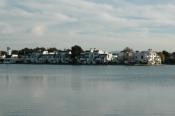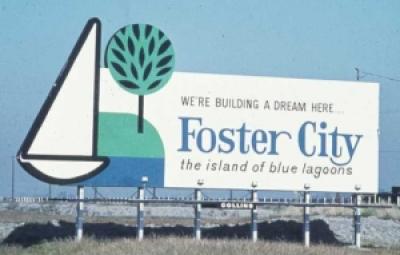History of Foster City
Introduction
The year is 1958...across the Bay, Union City is on the verge of incorporation...the national flag still has only 48 stars...and developer T. Jack Foster is coming out of a short-lived Pebble Beach retirement, taking a $200,000 option to buy Brewer's Island in an unlikely venture to build a "new city," to be named Foster City, with Bay Area business magnate Richard Grant.
Foster City is now a thriving reality with a population of approximately 30,000 people and a daytime population of employees that nearly equals the evening population of residents. The City is resplendent with trees, lagoons and award-winning homes. In the midst of this beauty and prosperity it is difficult to picture the raw, barren land of Brewer's Island with which Foster and Grant began their development.

History and Benefits of a Planned Community
Foster City is a planned community. Planned cities are wholly conceived from the outset, with an organized development plan (as opposed to haphazard development in segments throughout time). Expanded use of planned communities was an outgrowth of post World War II Great Britain, when urban destruction resulting from bombing during the war left Britons facing the daunting challenge of rebuilding their cities. At that time, the choice was made to rebuild according to a plan, rather than as the cities had been originally developed and built.
The success of the "new city" concept resulted in its gaining popularity in the United States. Two of the original planned communities were in Reston, Virginia, and Columbia, Maryland. In California, Foster City was soon followed by Irvine. By 1973 there were over 50 planned cities in the United States and others around the world.
Planned communities typically develop around a pre-determined threshold population level. This threshold serves as the basis for determining the number of homes, shops and industries to be built on the land and allows coordinated development of these elements. The planned nature of population growth allows neighborhoods to develop intact and purposefully avoids the commercial thoroughfares that commonly divide neighborhoods in other cities. Industrial and commercial development is kept away from the neighborhoods, resulting in a quality of life that is difficult to achieve in unplanned communities.
A planned city is often more aesthetically pleasing as well, following an architectural plan that results in orderly development, neighborhoods that age better over time and property that continues to command high value. The open market is controlled somewhat by the architectural perspective.
